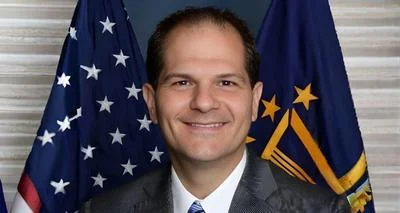Chicago Mayor Rahm Emanuel
Chicago Mayor Rahm Emanuel
Notwithstanding substantial fiscal deficits in Cook County and Chicago, significant year-over-year gains netted by tax increment financing (TIF) districts will not alleviate local shortages of hundreds of millions of dollars, according to Illinois Policy.
The research institute recently posited that TIF districts fail to support underfunded school districts, attracting developers in good faith, but using a formula that limits the amount of tax revenue allocated to educational institutions, libraries and parks.
Almost one-third of Chicago’s property taxes go to private funds for 143 TIF districts, suggesting that redevelopment is advertised in a way that pledges renewal for underserved communities while in reality, wealthier districts are capturing the cash, Illinois Policy revealed.

Sen. John F. Curran (R-Downers Grove)
This tips the scales in favor of more stable zones, with the institute reporting that close to half of $660 million amassed in Chicago TIF income in 2017 went to more affluent zones — leaving large, disadvantaged pockets including Chicago Public Schools struggling economically.
Consequently, poorer jurisdictions are forced to strike a balance by hiking property taxes and further weighing down Illinois property owners already paying notoriously high rates.
The cycle continues unabated with Chicago is even pondering a new TIF district on commercial property in Lincoln Park. Mayor Rahm Emanuel proposed a Cortland/Chicago River TIF district that would directly fund high-end onsite development in late 2017, according to the Chicago Reader.
That project followed one created in 2016 for Lathrop Homes, a public housing complex in need of refurbishing that subsequently experienced the elimination of multiple units intended for the needy, the Chicago Reader reported.
“Emanuel has taken a program intended for the poor and uses it to benefit the rich,” stated the Reader’s Ben Joravsky in December of last year, calling the TIF law “larded with loopholes.”
“[I]t's great that developers have big plans for the north side,” Joravsky added more recently. “But let's not pretend the rest of us won’t be footing the bill.”
Significantly, the Lathrop site sits on tax-exempt land owned by the Chicago Housing Authority — generating zero property tax income. Creating a TIF there would effectively lock that benefit in, creating an even higher burden on current property tax payers.
Even as the TIF system perpetuates misdirection of funds, most elected officials have not sought to remedy the imbalance.
“The reality is that TIFs are a bad deal for everyone but the city officials who award TIF money and the developers who receive it,” Illinois Policy concluded.
Two state legislators recently introduced regulations intended to remedy the problem, however.
Senate Bill 2880 and House Bill 5230 — filed respectively this year by state Sen. John F. Curran (R-Downers Grove) and state Rep. William Davis (D-East Hazel Crest) — would designate “blighted areas” as those falling at or below the area median income as defined by the U.S. Department of Housing and Urban Development.
Both proposals seek to amend the Tax Increment Allocation Redevelopment Act in the Illinois Municipal Code to redirect funding, and each has drawn bipartisan support according to the Institute.
“Taxpayers shouldn’t have to foot the bill for irresponsible budgeting practices that benefit connected developers,” Illinois Policy concluded. “Until Illinois does away with these political slush funds, local governments will continue to force taxpayers to make up for shortfalls that benefit a select few.”
.jpg)





 Alerts Sign-up
Alerts Sign-up